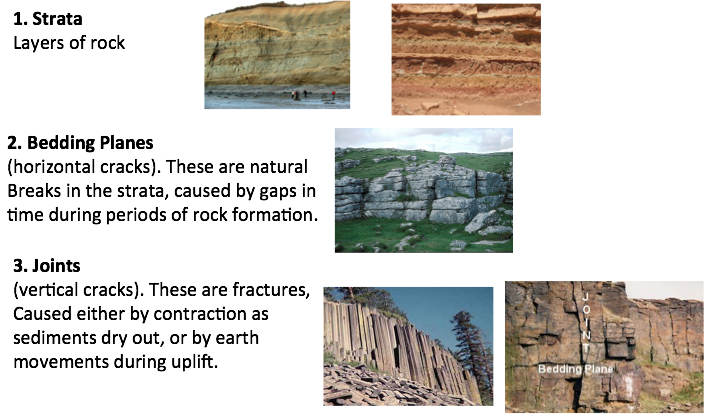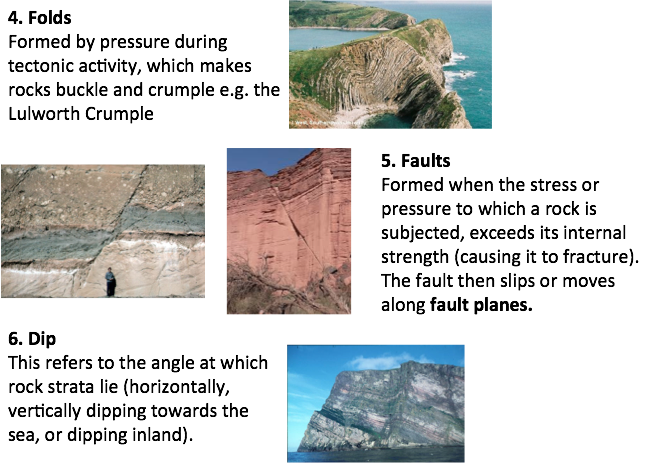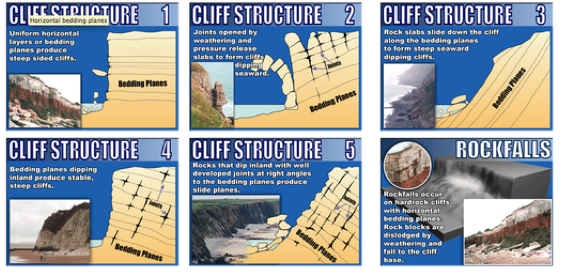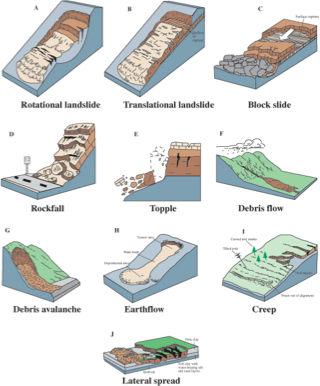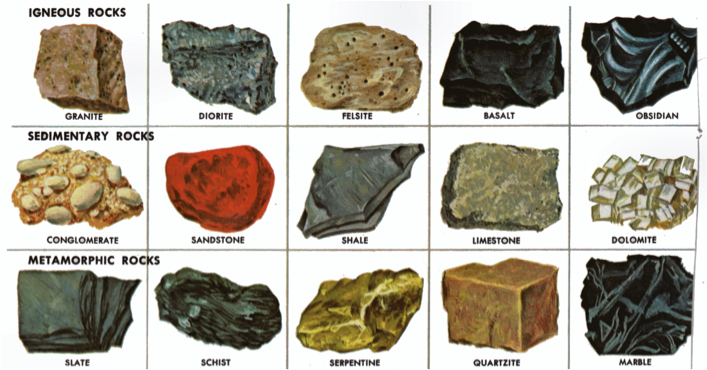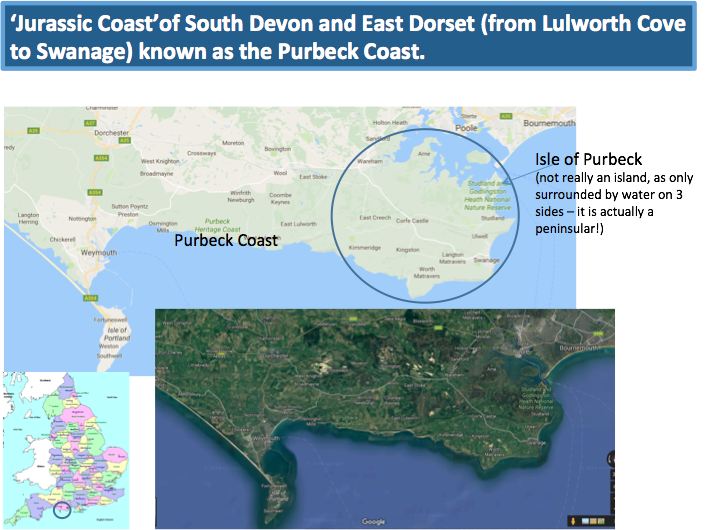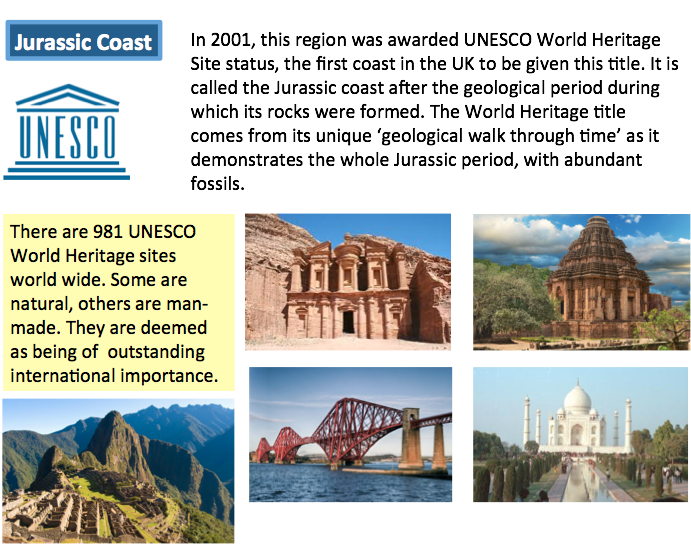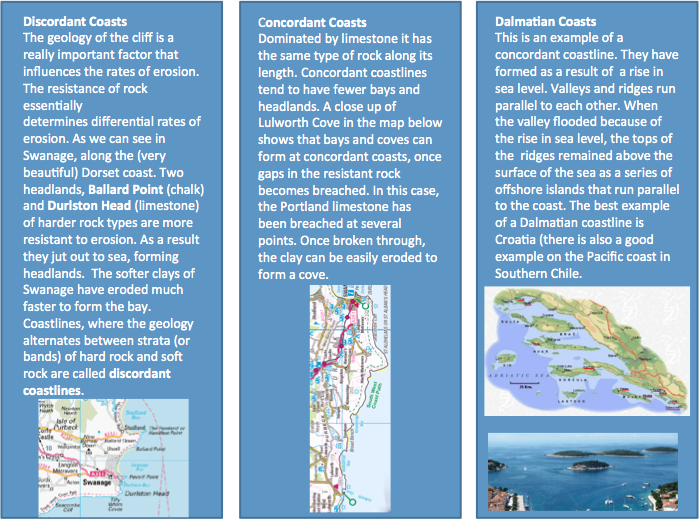Energy and Geology
Morphology
The morphology (shape) of a coastline will be
determined by
1.The lithology or physical characteristics of the rock
2.The relief and slope (cliff profiles)
3.The rock type (sedimentary, igneous or metamorphic)
4.The permeability of the rock (impermeable or permeable)
5.How hard/soft the rock is and its resistance to erosion
The lithology physical characteristics of rocks include:
The strata
Bedding planes
Joints
Folds
Faults
Dips
Discordant coast
This is where the geology alternates between bands of more resistant and less resistant rock which run at right angle to the coast (Isle of Purbeck from Studland Bay to Dulston Head).
Concordant coast
This is where bands of more resistant and less resistant rock run parallel to the coast (isle of Purbeck from Lulworth Cove to Kimmeridge Bay).
Impacts
The relief (height and slope) of the land, is also affected by the geology. There is a
direct relationship between the rock type, lithology and Cliff Profiles.
Cliff profiles are subject to marine processes, such as wave erosion, (hydraulic action,
abrasion, corrosion) as well sub-aerial processes. It literally means occurring ‘at
the base of the atmosphere’ and includes mass movement and weathering.
Flow
Mass movement:
Weathering:
Natural process by which rocks undergo changes in their appearance and composition by atmospheric (wind, rain, heat) and environmental factors (plants, animals, pollution, human activity).
Chemical weathering:
Carbonation -CO2 in the atmosphere dissolves in rainwater, forming carbonic acid which reacts with minerals in limestone, chalk and marble
Oxidation – rocks with metallic elements react with oxygen in the air/water and ‘rust’.
Hydrolysis- combination of water (as a weak acid) reacting with minerals in the rocks.
Mechanical/physical weathering:
Freeze-Thaw or Frost Wedging
Exfoliation/Pressure release - heating /cooling, expand/contract, layers or slabs of rock are removed (onion weathering)
Aeolian-caused by the wind
Biological weathering:
Growing plants
Burrowing animals
Type of Rock
The type of rock will influence its permeability, this in turn will affect the rate at which it is eroded, and the features that will be formed at the coastline.
IGNEOUS rocks (granite, diorite, basalt) are crystalline, resistant and impermeable
SEDIMENTARY rocks (limestone, chalk, sandstone, shale) are formed in strata (layers). Jointed sedimentary rocks (sandstone and limestone) are permeable. Other sedimentary rocks (chalk) have air spaces between their particles making them porous. Shale is fine and compacted making it impermeable.
METAMORPHIC rocks (marble, schist, slate) are very hard and resistant. They are impermeable.
Unconsolidated materials (such as the boulder clay on the Holderness coast) are loose and easily eroded. However, if compacted the particles can stick together and form an impermeable layer within a cliff strata.
The geology and lithology will affect the rates of erosion and the speed at which the coastline recedes. Weathering and mass movement processes will also affect the rate of erosion.
Erosion rate
Glacial till Holderness Coast 1-10m/yr
Sandstone Devon 1cm-1m/yr
Limestone Dorset 1mm-1cm/yr
Granite Cornwall 1mm/yr
Other factors that affect the erosion rate include:
High energy waves (driven by strong prevailing winds / long fetch)
Absence of a beach
Rising sea levels
Coastal management/sea defences elsewhere along the coast
Jurassic Coast
- Describe the ways morphology is impacted in a coastal system.
- Your answer should include: Lithology / geology / energy
- Explain how materials flow through the system as a result of the energy present.
- Your answer should include: Mass movement / weathering
